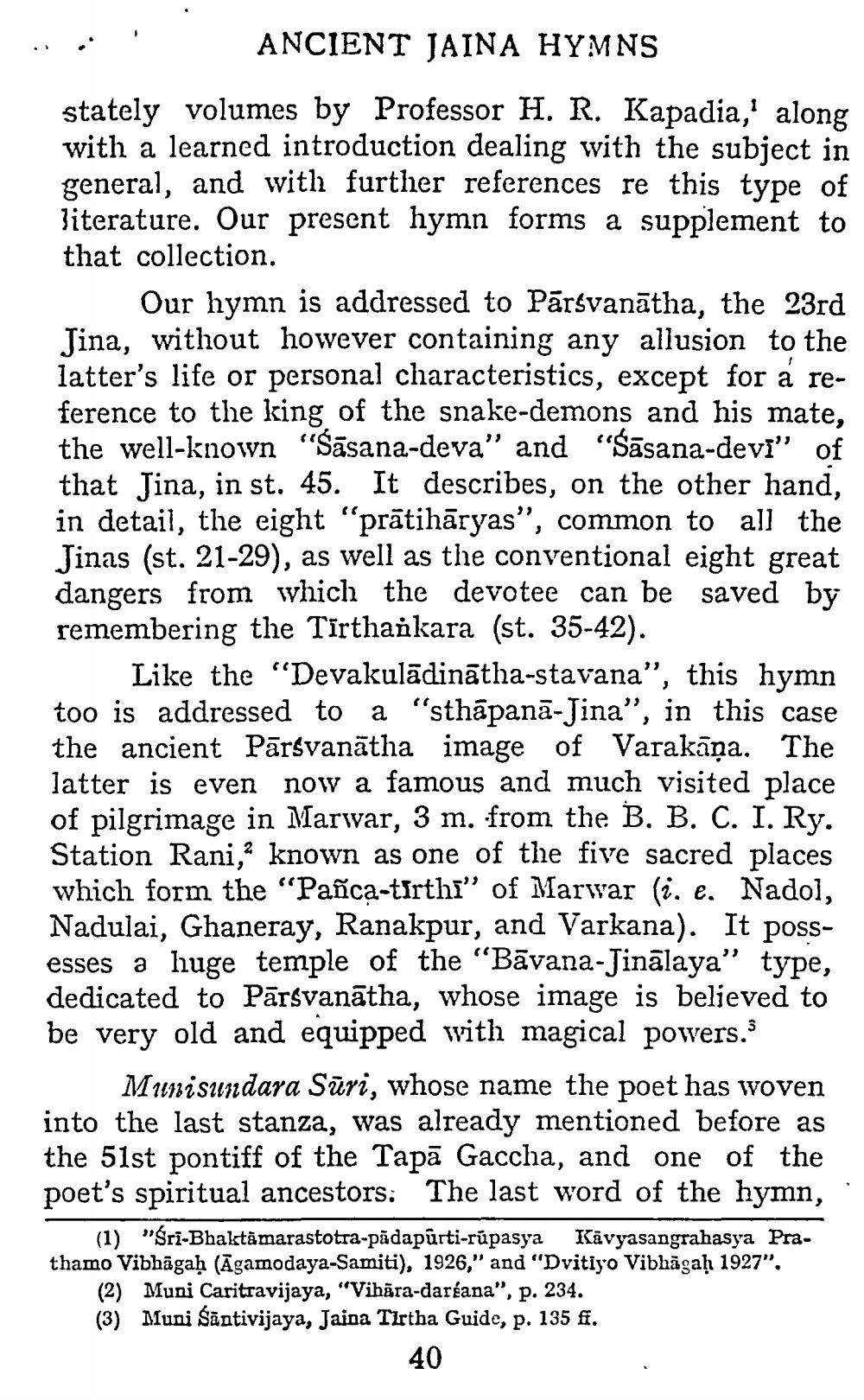________________
ANCIENT JAINA HYMNS
stately volumes by Professor H. R. Kapadia,' along with a learned introduction dealing with the subject in general, and with further references re this type of literature. Our present hymn forms a supplement to that collection.
1
Our hymn is addressed to Pārsvanātha, the 23rd Jina, without however containing any allusion to the latter's life or personal characteristics, except for a reference to the king of the snake-demons and his mate, the well-known "Sasana-deva" and "Sasana-devi" of that Jina, in st. 45. It describes, on the other hand, in detail, the eight "prātihāryas", common to all the Jinas (st. 21-29), as well as the conventional eight great dangers from which the devotee can be saved by remembering the Tirthankara (st. 35-42).
Like the "Devakulādinātha-stavana", this hymn too is addressed to a "sthāpanā-Jina", in this case the ancient Pārsvanatha image of Varakāṇa. The latter is even now a famous and much visited place of pilgrimage in Marwar, 3 m. from the B. B. C. I. Ry. Station Rani, known as one of the five sacred places which form the "Pañca-tirth" of Marwar (i. e. Nadol, Nadulai, Ghaneray, Ranakpur, and Varkana). It possesses a huge temple of the "Bāvana-Jinālaya” type, dedicated to Pārsvanātha, whose image is believed to be very old and equipped with magical powers.
Munisundara Suri, whose name the poet has woven into the last stanza, was already mentioned before as the 51st pontiff of the Tapa Gaccha, and one of the poet's spiritual ancestors. The last word of the hymn,
(1) "Śri-Bhaktamarastotra-pădapurti-rupasya Kavyasangrahasya Prathamo Vibhagaḥ (Agamodaya-Samiti), 1926," and "Dvitiyo Vibhāgaḥ 1927".
(2) Muni Caritravijaya, "Vihara-darśana", P. 234. (3) Muni Santivijaya, Jaina Tirtha Guide, p. 135 ff.
40




